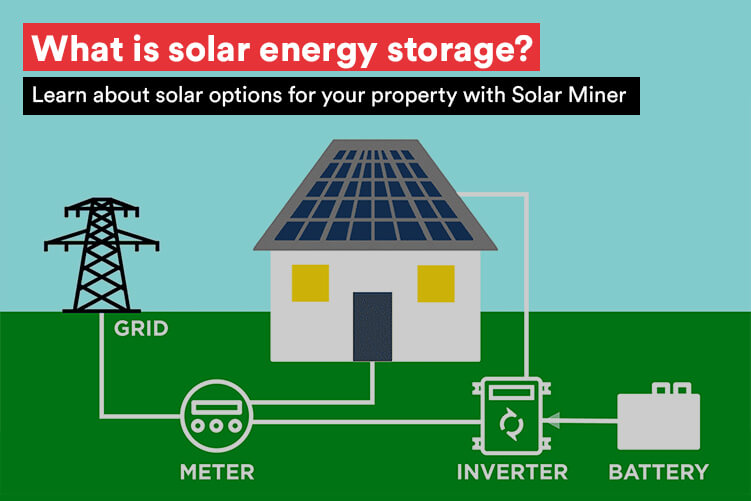There is no doubt that solar power is growing in popularity in Australia as more of us realise the financial and environmental benefits of solar energy. The advantages of solar can only be enjoyed if the solar panels are installed correctly.
Solar power can seem like a complicated topic at times, we have got you, and we are here to make things simpler for you. In this blog we have tried to cover the basics of solar storage options and advantages of it.
Solar energy storage is all about making the most of the sun’s power by saving up excess energy during the day, so we can use it when the sun isn’t around, like at night or on cloudy days. This is usually done with batteries, like the ones in your phone, but much bigger, or even other systems that store energy in different ways.
By holding onto that extra solar energy, we ensure we have a steady supply of clean power, no matter the weather. It’s a game-changer for making solar energy more reliable and reducing our dependence on fossil fuels.
What Is Solar Energy Storage?
Think of solar energy storage as a way to “bottle up sunshine” for later use. Solar panels work best during the day when the sun is out, but what about evenings, cloudy days, or unexpected blackouts? That’s where solar batteries come in.
These batteries store the extra energy your panels produce, so you can use it whenever you need it—whether it’s cooking dinner at night, running the AC on a hot evening, or keeping the lights on during a power cut.
In short, solar energy storage gives you more control, reduces your reliance on the grid, and helps you get the most out of your solar system, all while keeping your home powered by clean, renewable energy.
Think of solar energy storage as a clever way to save the sunshine. We all know solar panels work best when the sun is out, but what happens when it’s cloudy or the sun goes down? That’s where a storage system comes in, it’s like a piggy bank for your electricity.
The most common setup for a home is a solar battery. It’s simple: your solar panels make more power than you can use right away, and instead of sending that extra energy back to the grid, the battery stores it. Then, when the panels aren’t producing, the battery steps in to power your lights, TV, and everything else.
How it all works, step by step:
- Catching the sun: Your solar panels absorb sunlight and turn it into raw electricity (DC).
- Making it useful: An inverter converts that raw energy into the kind of electricity (AC) your home appliances need.
- Filling up the bank: Any power you don’t use instantly goes into a battery to be stored for later.
- Powering up at night: When the sun isn’t shining, the battery releases its stored energy, so your home stays powered without needing the grid.
This whole process lets you use more of the clean energy you produce, making you less dependent on your utility company.
Beyond the home battery:
While home batteries are the most popular, there are other cool ways to store solar energy on a larger scale:
- Batteries: The most common choice for homes and businesses. Lithium-ion batteries are the stars of the show—they’re efficient and last a long time. There are also older, more affordable options like lead-acid batteries for off-grid systems.
- Heat Storage: Imagine storing sunshine as pure heat. Some big power plants use solar energy to heat up a special liquid, like molten salt. This heat is then used to create steam, which spins a turbine to make electricity.
- Mechanical Power: This is a bit more creative:
- Pumped Hydro: When there’s extra power, it’s used to pump water uphill. When you need electricity, you just let the water flow back down, turning a generator on its way.
- Compressed Air: You can use surplus energy to compress air into a big underground cave. When you need power, you release the air to spin a turbine.
- Flywheels: These are like spinning tops that store energy. They’re great for short bursts of power and keeping the grid stable.
When you combine a solar battery with your home’s connection to the main grid, you get the best of both worlds: reliable power from your solar panels and a backup from the grid whenever you need it.
How do You Define Solar Energy Storage?
Let’s start with simple basics, “Storage” itself refers to storing some form of energy for future use. Solar panels on the roof absorb the solar energy and produce electricity in the form of Direct Current (DC). Most of the appliances use Alternate current (AC) to function.
Solar inverter plays an important role in solar PV systems, it converts DC electricity to AC, which can now be easily used to power the appliances.
Now, let’s assume your solar PV system produces 20kW per day of output out of which 15kW is consumed. The balance of 5kW is fed back to the grid, for which you receive credits that reflect in your quarterly bills. However, a solar battery can store the excess power generated by your solar PV system for the night time or future usage, reducing your reliance on the grid power.
3 Advantages of Installing Solar Battery + Solar System
There has been so much buzz around solar batteries in the recent times of energy crisis. Most of us are considering hooking up a solar battery to our existing solar system or installing a battery ready system. However, you might want to learn about the benefits of installing solar battery:
Sustainable Power:
Solar PV systems generate the highest power in the day time, technically we might not be using so much power in the day. Electricity retailers charge different tariffs for consuming electricity during different hours of the day and night.
During the night time, when we cannot use solar power from the solar system, we might source the power from the grid, which can be expensive depending on your energy retailers tariff plans.
Solar batteries can help you use the excess power generated by your solar PV system during the night time and cloudy days, providing you with sustainable power.
Protection of your Savings:
Most of the homeowners and business owners have already noticed an increase in power bills due to increase in electricity production costs. The power prices increase by a significant percentage every year and we have almost seen doubling of power bills in recent times.
All of this does impact significantly on our monthly expense budget. Installing a solar battery along with a solar PV system can safeguard you from rising power costs and you might also receive some credits for selling the stored excess power.
Electricity Control and Monitoring:
A solar system combined with a solar battery can help you regain control over your electricity usage. Most of the solar products available in the market now are technologically advanced and help you monitor the performance of your solar system through your smart devices.
This helps you track your electricity usage and assess your solar system performance with no hidden data. You can look into real time data and maintain your electricity budget.
2 Factors to Consider When Buying a Solar Storage Battery + solar PV system
Now, considering the benefits of installing a solar PV system along with solar battery sound quite convincing to you. Let’s look at the two important factors to consider while buying a solar storage battery and solar PV system:
Solar system and solar battery size
Based on your electricity requirements and consumption patterns, your solar system and solar battery size can be calculated. There are various solar panels and solar battery options available in different sizes, however, what best suits your property can be best determined by a solar expert.
We at Solar Miner believe every property is different and needs to be treated differently, speak to our solar experts, discuss your solar needs and get a customized solar quote for your property.
Solar System and Solar Battery Warranty
A warranty guarantees that the labour and parts for a repair are covered and thus warranties are really important. Solar inverter, solar panels, solar batteries and mounting and racking system are the important components of the solar PV system.
All of them come with different warranties, and the numbers in the warranty figures differ with the brands quoted. Solar Miner offers a wide range of solar products at the most affordable prices. Get in touch with us today to learn more about solar batteries and solar panel systems for your property.
Conclusion :
To wrap it up, solar energy storage is a game changer for making solar power work better for your home. It lets you save up extra energy during the day so you can still have power when the sun goes down or on cloudy days.
Whether you’re using batteries or other storage systems, it helps you get the most out of your solar setup, cutting down on energy bills and reducing your impact on the planet.
Looking into solar options for your property is a smart way to tap into renewable energy, save money in the long run, and do your part for a cleaner future. With technology always improving, there’s no better time to think about switching to solar.





